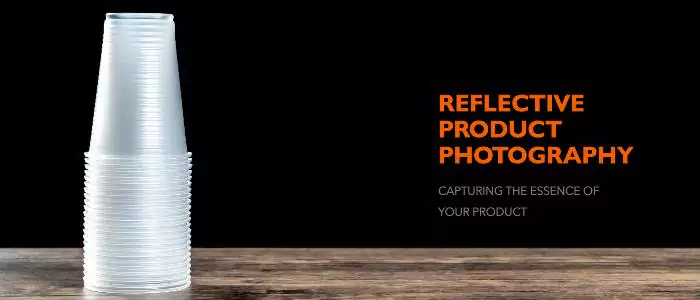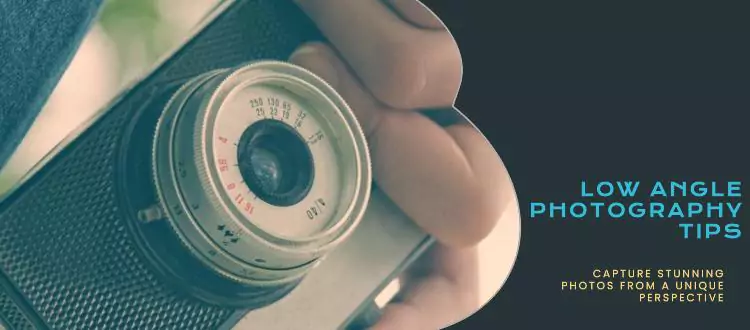Theodore Lowe, Ap #867-859
Sit Rd, Azusa New York
Find us here
Tips for Reflective Product Photography

Capturing the perfect image of reflective products can be a challenge for photographers at any level. This process is crucial for selling and presenting items online and in print, requires a strategic approach to lighting and composition. Reflective surfaces like glass, metal, or jewelry can present issues like glare and distracting reflections that detract from the intended focus—the product itself.
The successful photographer must navigate these obstacles by manipulating light and using specific equipment to their advantage. With the right techniques, such as diffused lighting, careful camera angles, and the application of proper filters, one can create stunning, detailed photographs that accurately represent the product while minimizing potential distractions. This introductory guide aims to provide essential tips for photographers looking to master the art of reflective product photography and create visually compelling images that drive customer interest and sales.
Introduction to Reflective Product Photography
Reflective product photography is a captivating niche, providing intriguing visuals for items with glossy surfaces. Think about that mesmerizing sheen on a new car or the allure of a sleek smartphone. Such images attract and hold the viewer's attention, but capturing them can be a complex art. In this section, we delve into the secrets behind photographing shiny objects and overcoming common challenges.
The Allure of Shiny Objects
Glossy products have a unique charm. They reflect the environment, adding depth and context to the product shot. Reflective surfaces can also imply quality and luxury, making the product more desirable. Effective photography of these products requires a blend of the right equipment, lighting, and technique.
Challenges with Reflective Surfaces
However, reflective surfaces can be tricky. They easily catch unwanted reflections and glare, making it hard to control the light. Dust and fingerprints appear more prominently, necessitating a meticulous setup. By understanding the properties of light and reflection, photographers can turn these challenges into strengths.
Listed below are some tips to master reflective product photography:
- Use a polarizing filter to control reflections.
- Set up a controlled lighting environment to manage shadows and highlights.
- Maintain a clean product surface to avoid post-production hassle.
- Experiment with diffuse lighting for a softer look.
Essential Equipment List
Mastering the art of reflective product photography starts with the right equipment. This essential list ensures you have everything needed to capture stunning, glare-free images. Let's explore what tools you'll need for that perfect shot.
Choosing the Right Camera and Lens
High-quality images begin with a reliable camera. Opt for a DSLR or mirrorless model boasting manual settings. This lets you control shutter speed, aperture, and ISO. The ideal lens should minimize distortion; a macro lens works brilliantly for small, detailed products, while a standard 50mm lens is a versatile choice for larger items.
Lighting Essentials for Reflective Objects
Uniform lighting is crucial to eliminate unwanted reflections. Start with a continuous lighting setup, using daylight-balanced LED lights. Soften harsh glare with a diffuser. A light box can be a game-changer for small products, enveloping the object in consistent, diffused light.
Modifiers, Backdrops, and Reflectors
Modifiers like softboxes and umbrellas control light spread. Pair these with a range of neutral-colored backdrops to complement any product. Use white foam boards as reflectors to bounce light, filling in shadows for a balanced exposure. A black flag can add depth by subtracting light and enhancing contrast.
Camera Settings for Clarity
Reflective product photography can be challenging.
Correct camera settings enhance clarity.
This section covers essential camera settings.
Aperture and Depth of Field Considerations
Aperture affects depth of field. Choose an aperture that offers the best detail for your product.
- Smaller f-numbers: blur background, focus on product.
- Larger f-numbers: more of the scene in focus.
Shutter Speed and Iso for Product Sharpness
Shutter speed impacts motion blur. Faster speeds reduce the risk, especially for hand-held shots.
|
Shutter Speed |
Conditions |
|
1/400s or faster |
Hand-held shooting |
|
1/125s |
Using tripods |
ISO affects noise. Keep it low for sharp images.
White Balance for Accurate Colors
White balance corrects color temperature. It ensures colors match real-life.
Use custom white balance for the best results.
Experiment with presets for different light sources.
This approach guarantees accurate representation of your products.
Lighting Techniques for Shine
Capturing the perfect shine in reflective product photography can be challenging. Proper lighting techniques are essential for highlighting the best features of any shiny object. These techniques help in creating images that truly sparkle without unwanted glare or hot spots. Let's explore some effective lighting setups for that perfect glow.
Softbox Setups to Minimize Glare
Glare can distract and take away the beauty of the product. A softbox is a photographer's best friend when it comes to reducing glare. Here's how to use them effectively:
- Place softboxes at angles where light bounces away from the camera.
- Use larger softboxes for a more even light spread.
- Keep the softbox close to the product for a softer light.
Positioning Lights to Enhance Reflection
The angle and position of lights can enhance the natural reflections of a product. Make your products shine with these simple tips:
- Position lights at a 45-degree angle for optimal reflection.
- Use a fill light to balance reflections and reduce contrast.
- Reflect the main light with white cards for extra brilliance.
Using Diffusers to Reduce Hot Spots
Hot spots can ruin an otherwise great shot. Diffusers scatter light, creating a gentle illumination. Here’s how you can use them:
- Place diffusers between the light source and the product.
- Opt for larger diffusers for a broader light dispersion.
- Adjust the distance of the diffuser to fine-tune the softness of light.
Composition and Framing
Capturing the beauty of reflective products takes skill. Thoughtful composition and framing can transform a simple photo into a stunning one. Let's focus on the angles, the rule of thirds, and the use of negative space. These tools will make your reflective product photos shine.
Angles to Showcase Product Features
The right angle can make a product stand out. Consider these tips:
- Eye-level shots give a natural view.
- High-angle shots highlight the top and provide context.
- Low-angle shots offer a sense of importance.
The Rule of Thirds In Product Photography
This classic photography rule is the key for balance. Here's how to apply it:
- Divide your frame into nine equal parts using two horizontal and two vertical lines.
- Place the product where the lines intersect.
- Align important elements along these lines or their intersections.
The rule of thirds draws the eye to your product naturally.
Using Negative Space Effectively
Negative space isn't empty—it's a powerful tool. Keep these pointers in mind:
- Surround your product with space to draw focus.
- Use simple backgrounds to avoid distractions.
- Balanced negative space can make a photo more impactful.
Post-processing Best Practices
Capturing the perfect shot of reflective products is just the start. Post-processing does the magic.
Edit images with care, to produce stunning visuals. Tools and software enhance photo quality. But remember, subtlety is the key.
Batch Editing for Consistent Results
Batch editing ensures your photos look uniform. It saves time too. Use software like Lightroom or Photoshop. Apply the same settings across multiple images for harmony.
Removing Blemishes and Distractions
Reflective surfaces show everything. Remove unwanted blemishes. Use the clone stamp or healing brush in Photoshop. Your visuals will have a cleaner, more professional appeal.
Enhancing Shine without Overdoing It
Reflective products should shine, not blind. Adjust highlights to improve shine. Avoid excessive brightness. The goal is a natural look that captures attention.
Overcoming Common Obstacles
Reflective product photography creates stunning visuals. But challenges may arise. Master these to achieve impeccable shots.
Dealing with Double Reflections
Double reflections can distract. They might confuse viewers. Use these tips to minimize or remove them:
- Adjust the angle of lighting and your camera.
- Employ polarizing filters to cut down unwanted reflections.
- Position black cards around the product for controlled reflections.
Handling Color Cast Issues
Reflective surfaces can mirror colors, causing color casts. To tackle this:
- Use a neutral-colored background. White or gray works best.
- Set your camera's white balance accurately to the environment.
- Post-processing software can help adjust any remaining color cast.
Managing Fingerprints and Dust
Cleanliness is the key. Fingerprints and dust stand out on shiny surfaces. Always:
- Clean the product with microfiber cloths and lens cleaner.
- Handle items with cotton gloves.
- Use an air blower for fine dust just before you snap the photo.
Creative Techniques for Unique Shots
Capturing the allure of reflective products requires innovation and a bit of photography magic. Reflective items challenge photographers with their light-bouncing surfaces, but with the right creative techniques, you can transform these challenges into unique, mesmerizing shots. Let's delve into some inventive approaches to make your reflective product photography stand out.
Playing With Colored Gels
Colored gels are sheer sheets of plastic that add a splash of color to your photographs. When you use them with your light sources, they can create stunning effects on reflective surfaces. Here's how to make the most out of them:
- Choose complementary colors to your product for a harmonious look
- Experiment with multiple gels for a blend of hues
- Place gels behind the subject for a subtle backdrop or in front for vivid reflections
Introducing Motion for Dynamic Effects
Motion can breathe life into product photography. Reflective surfaces capture motion in a way that adds energy and excitement. Use these tips to introduce movement into your shots:
- Rotate the product slowly to catch the light differently and create a sense of motion
- Swing a light source around the product for dynamic light streaks and reflections
- Use a turntable to get a 360-degree showcase of the product’s reflective qualities
Using Water and Other Elements for Creative Twists
Adding elements like water can transform a simple photo into a work of art. It's not just about splashes and drops; think reflections, distortions, and textures. See these techniques to mix elements creatively:
|
Element |
Effect |
Tip |
|
Water |
Ripples create visual intrigue |
Use a spray bottle for fine mist |
|
Glass |
Distorts reflections with texture |
Place glass between the light and product |
|
Smoke |
Adds a mystical or ethereal quality |
Direct smoke around the product |
Building a Portfolio of Reflective Products
Building a portfolio of reflective products is a journey that showcases your skill in capturing the intricate details and challenges that come with reflective surfaces. Whether you are a seasoned photographer or new to the game, creating a stunning visual collection of gloss, gleam, and shine can set you apart. Let's dive into how to orchestrate a portfolio that not only displays your technical prowess but also tells a compelling visual story.
Selecting Diverse Products for Portfolio Variety
Curate a range of items to demonstrate versatility in your photography. Here’s how:
- Include different shapes to show how you handle varied angles.
- Choose a variety of sizes, from small jewelry to large mirrors.
- Go for multiple finishes – matte, glossy, and in-between.
Telling a Story through Your Photographs
Each photo should have a narrative.
- Use backgrounds that complement the product's narrative.
- Arrange props to add context and depth to the story.
Stories help viewers connect with your portfolio on an emotional level.
Leveraging Feedback for Improvement
Seek input from peers and clients to refine your work. This can lead to:
|
Feedback Type |
Benefits |
|
Technical |
Enhances quality and detail |
|
Emotional |
Boosts the impact of stories |
|
Conceptual |
Improves overall composition |
Marketing Tips for Photographers
Reflective product photography poses unique challenges. To stand out, photographers must master both their craft and marketing. Here's how pros elevate their business game.
Crafting an Appealing Online Presence
Your online image speaks volumes. A sleek, user-friendly website showcases your portfolio attractively. Engage followers with consistent, high-quality content on social media.
- Build a professional website with an eye-catching gallery.
- Use SEO techniques to rank higher on search engines.
- Post regularly on Instagram, Pinterest, and Facebook.
Networking with Potential Clients
Relationships drive business. Attend industry events, join forums, and connect on platforms like LinkedIn. Word-of-mouth referrals can be your golden ticket.
- Join photography groups and engage in conversations.
- Offer special promotions to garner interest.
- Collaborate with related businesses to expand your reach.
Showcasing Work in Relevant Markets
Display your work where it matters. Research your niche and find platforms that cater to your audience. Whether it’s art fairs, online marketplaces, or digital magazines, ensure your presence.
|
Platform |
Audience |
Engagement Method |
|
Etsy |
Art Enthusiasts |
Shop Setup |
|
Saatchi Art |
Art Collectors |
Portfolio Display |
|
|
General Public |
Visual Stories |
Conclusion
Capturing the perfect shot with reflective products doesn't have to be daunting. Embrace these tips to master the craft of reflective photography. From smart lighting choices to the right angles, your images will soon dazzle. Remember, patience and practice is your trusted allies.
Related blog posts
Low Angle Photography Tips
For stunning low angle photography, get close to the ground and use a wide lens. Experiment with perspectives to add a sense of grandeur or power to your subject.


